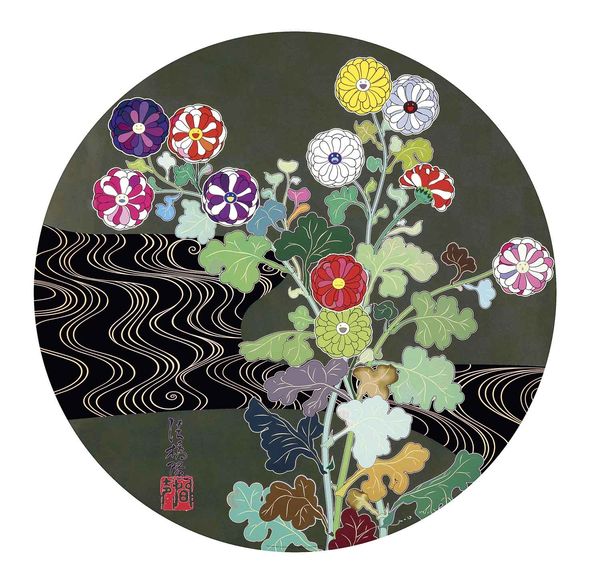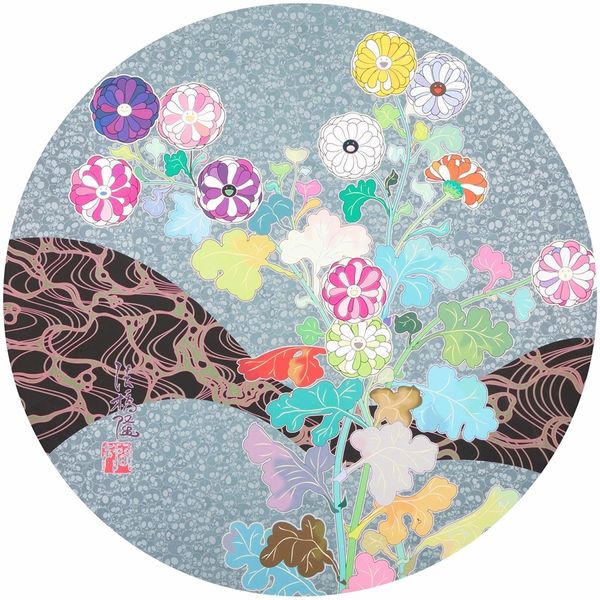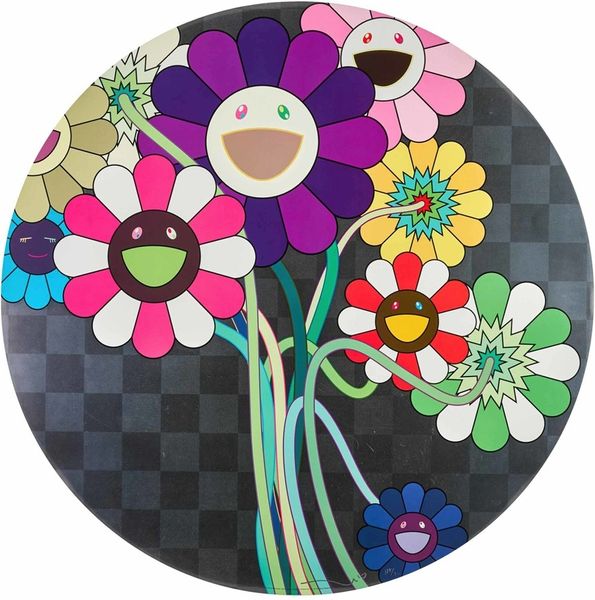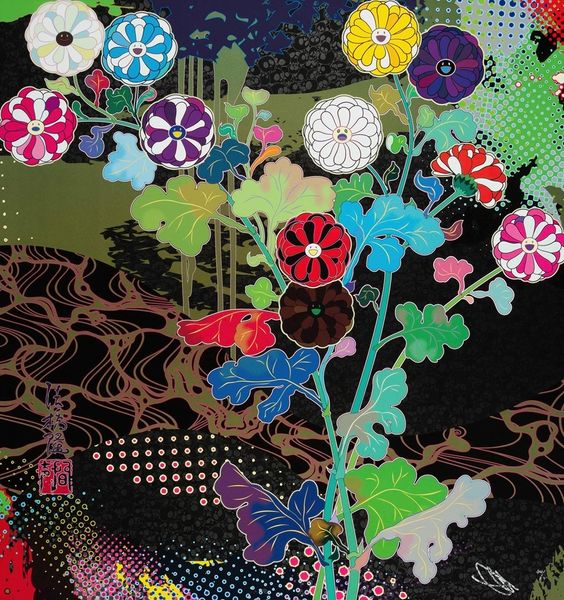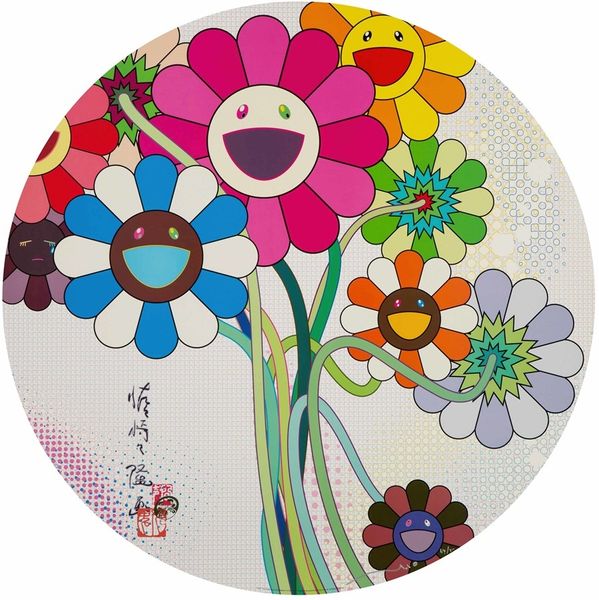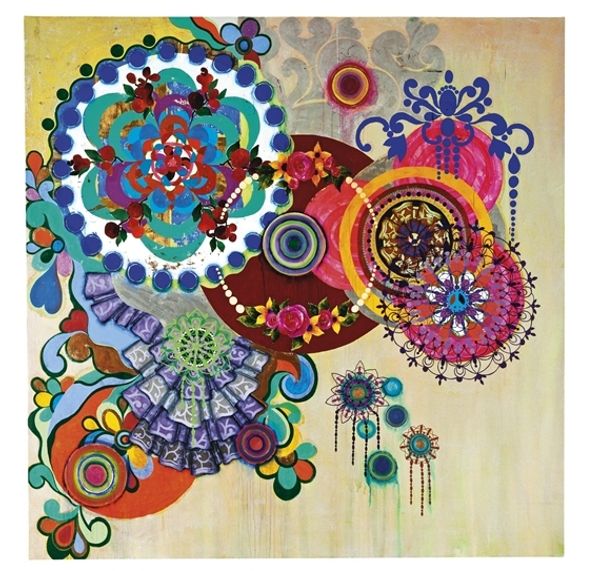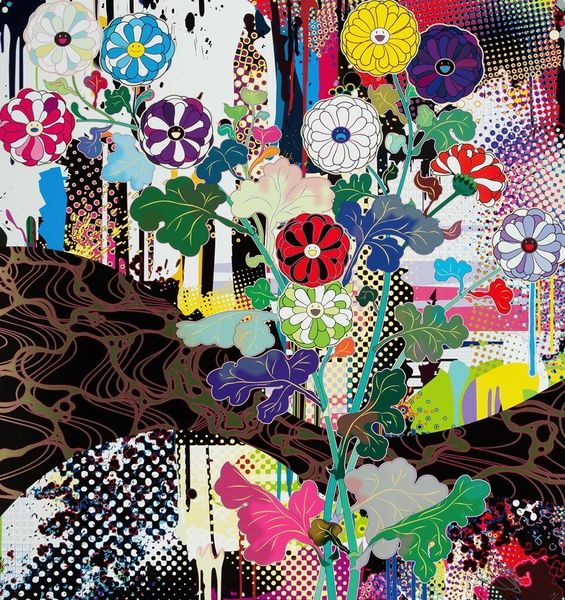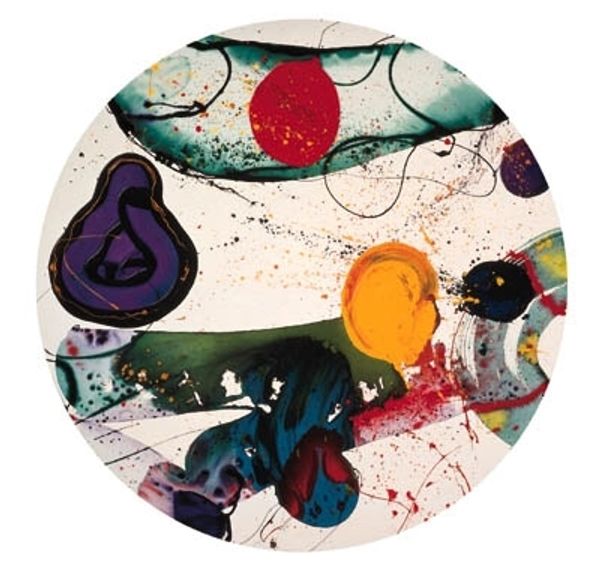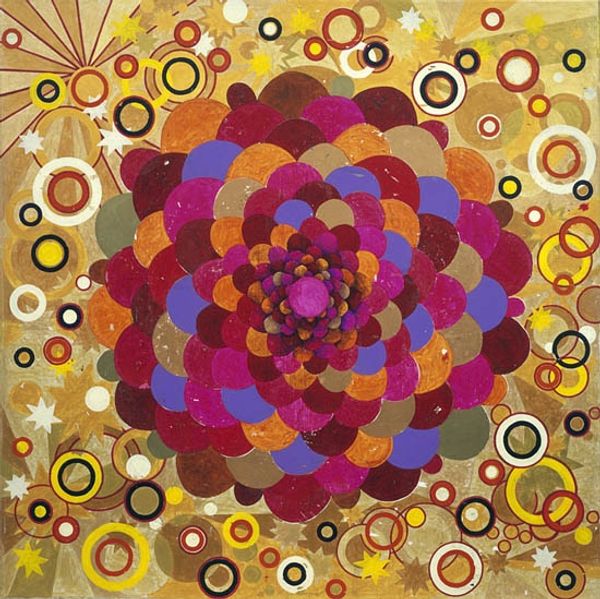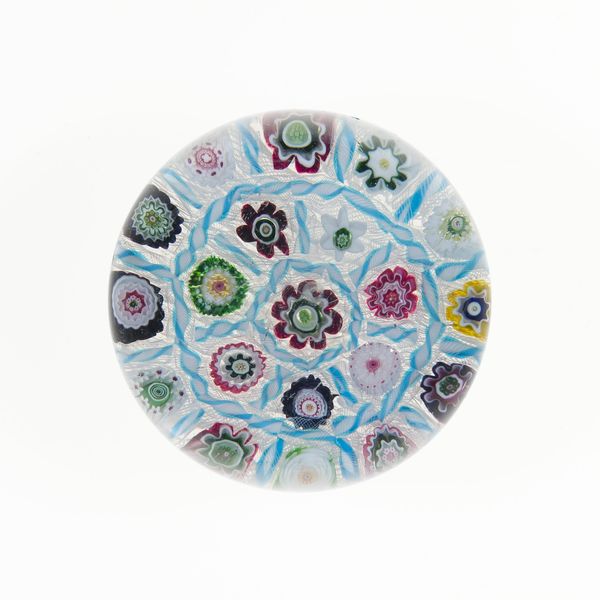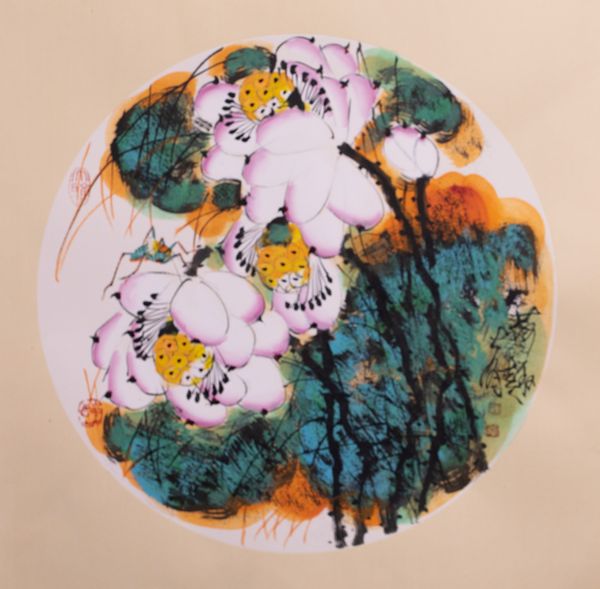
#
neo-pop
Copyright: Modern Artists: Artvee
Curator: Here we have Takashi Murakami’s, *The Golden Age; Korin-Kansei*, created in 2014. It's a vibrant, circular piece rendered in acrylic paint, a delightful explosion of color. Editor: My first thought is just how intensely cheerful it feels. Despite what appears to be dark waves contrasting the composition, there's an overwhelming sense of optimistic whimsy emanating from it. Curator: Murakami often merges traditional Japanese painting with pop art sensibilities. The gold background evokes the luxurious aesthetic of Rinpa school artists like Korin, referenced in the title. The wave-like pattern and floral motifs connect directly to that tradition. Editor: Absolutely. The waves symbolize the fleeting nature of time, the constant flow of change. The flowers, especially chrysanthemums, are potent symbols of longevity and imperial power within Japanese iconography. They're given a kind of contemporary manga twist, though, with the flattened planes and cheerful color palettes. Curator: And thinking about his artistic process, we should consider the studio production methods involved. These paintings, while bearing Murakami’s vision, often involve teams of assistants. This blurs the lines between individual artistry and factory production, questioning our notions of artistic labor and value. Editor: True, it’s hard to miss Murakami's deliberate use of repetition. The seriality itself alludes to mechanical production, but it also speaks to cycles of rebirth. Those cartoonish flower faces could be interpreted as symbols of joy, or perhaps a more complex comment on manufactured happiness in consumer culture. Curator: The contrast between the high art historical references and the pop-art style creates an interesting tension, it almost feels rebellious. Murakami seems intent on democratizing art, pushing it beyond the exclusive confines of the art world, both through imagery and methods of production. Editor: Yes, and it highlights the cultural memory embedded in these symbols. Whether consciously or unconsciously, viewers are engaging with a lineage of meaning that extends back centuries, all filtered through Murakami’s singular vision. I see a commentary on our relentless pursuit of optimism in a world filled with transient experience. Curator: Ultimately, I believe *The Golden Age; Korin-Kansei* challenges us to reconsider the boundaries of art, questioning our assumptions about originality, authorship, and the relationship between art and commerce. Editor: And I appreciate the complex way it balances a visual spectacle with the weight of cultural symbols. It gives the work a lasting quality that keeps revealing fresh aspects to the eye.
Comments
No comments
Be the first to comment and join the conversation on the ultimate creative platform.

